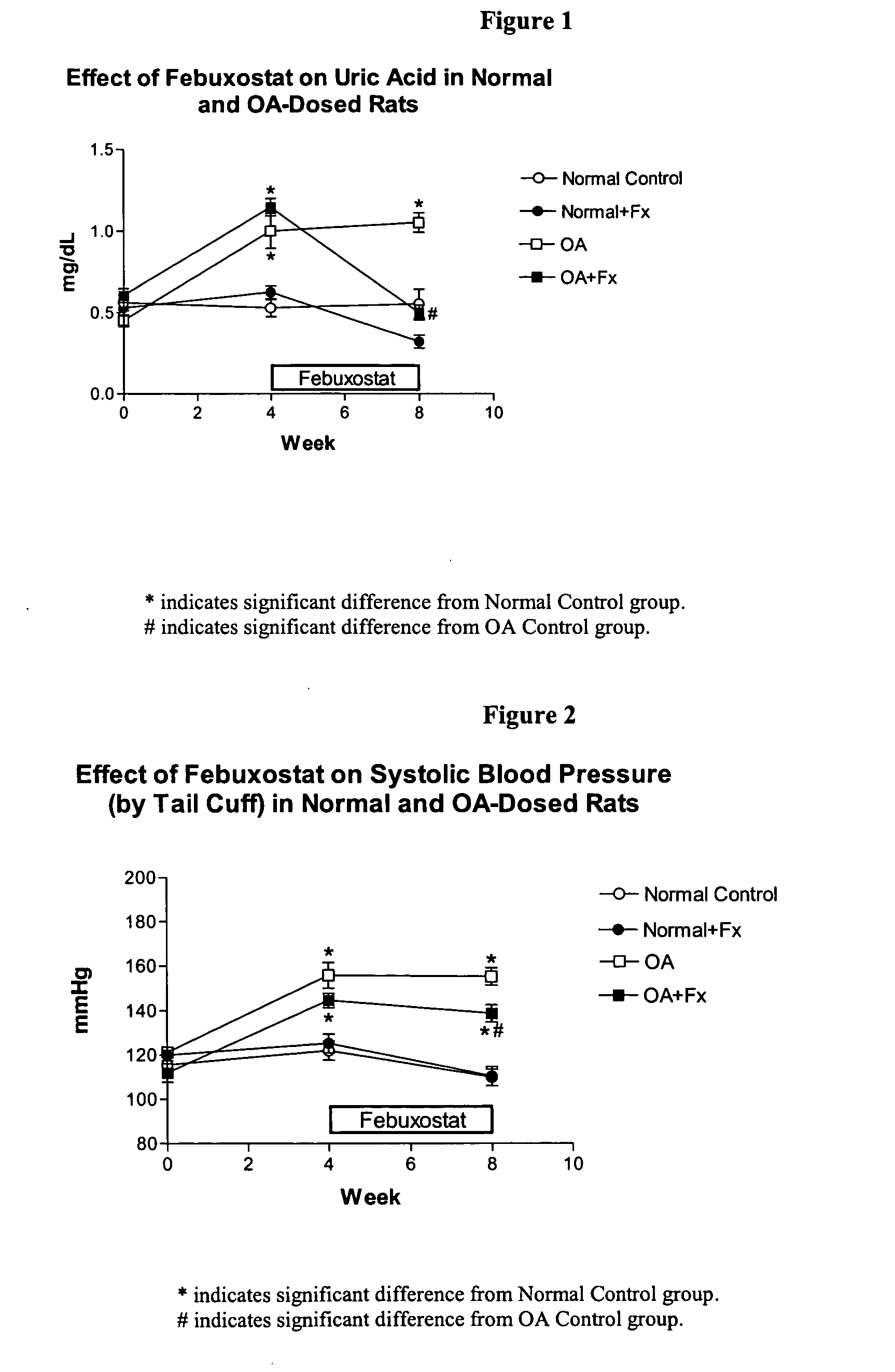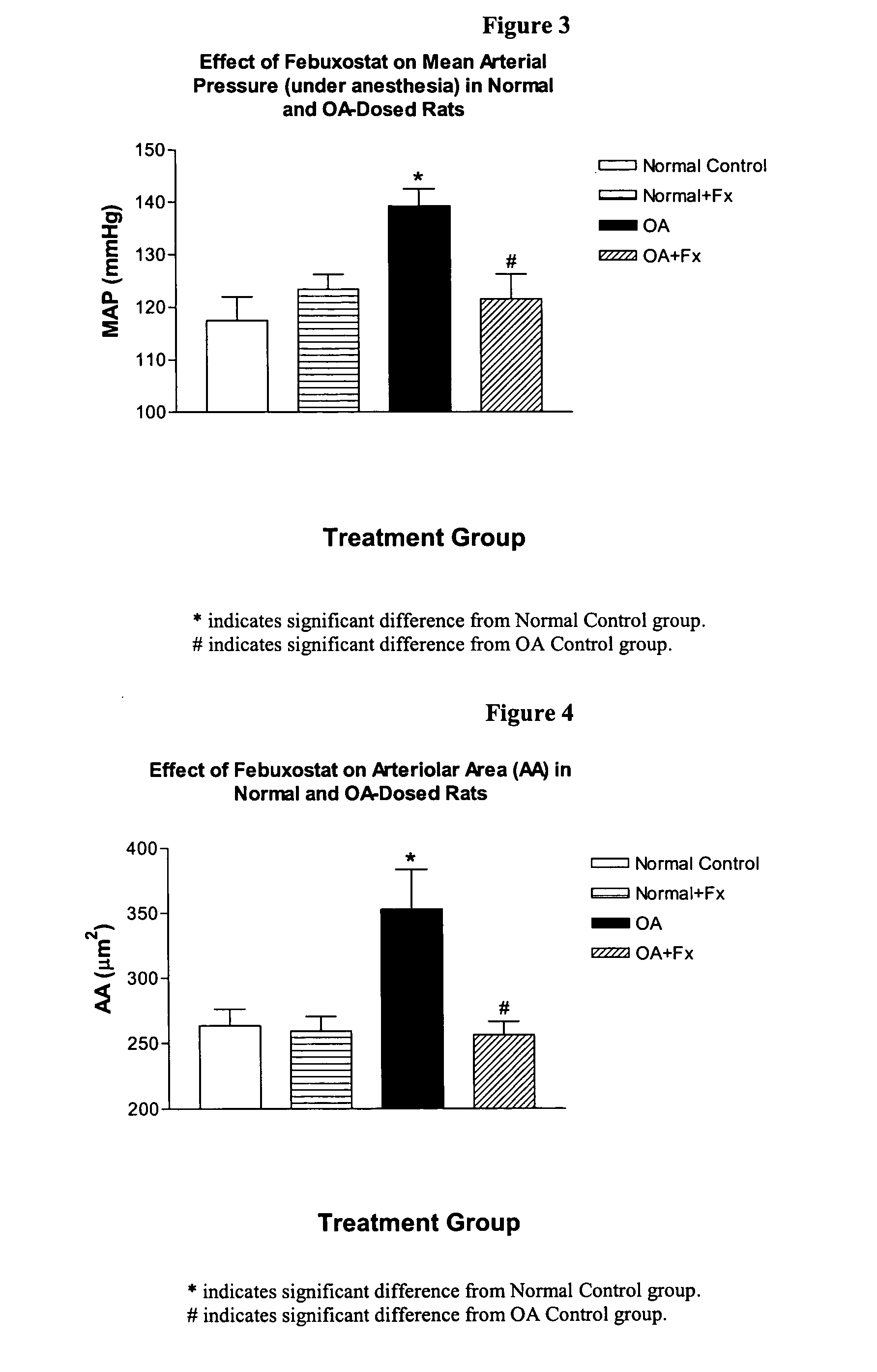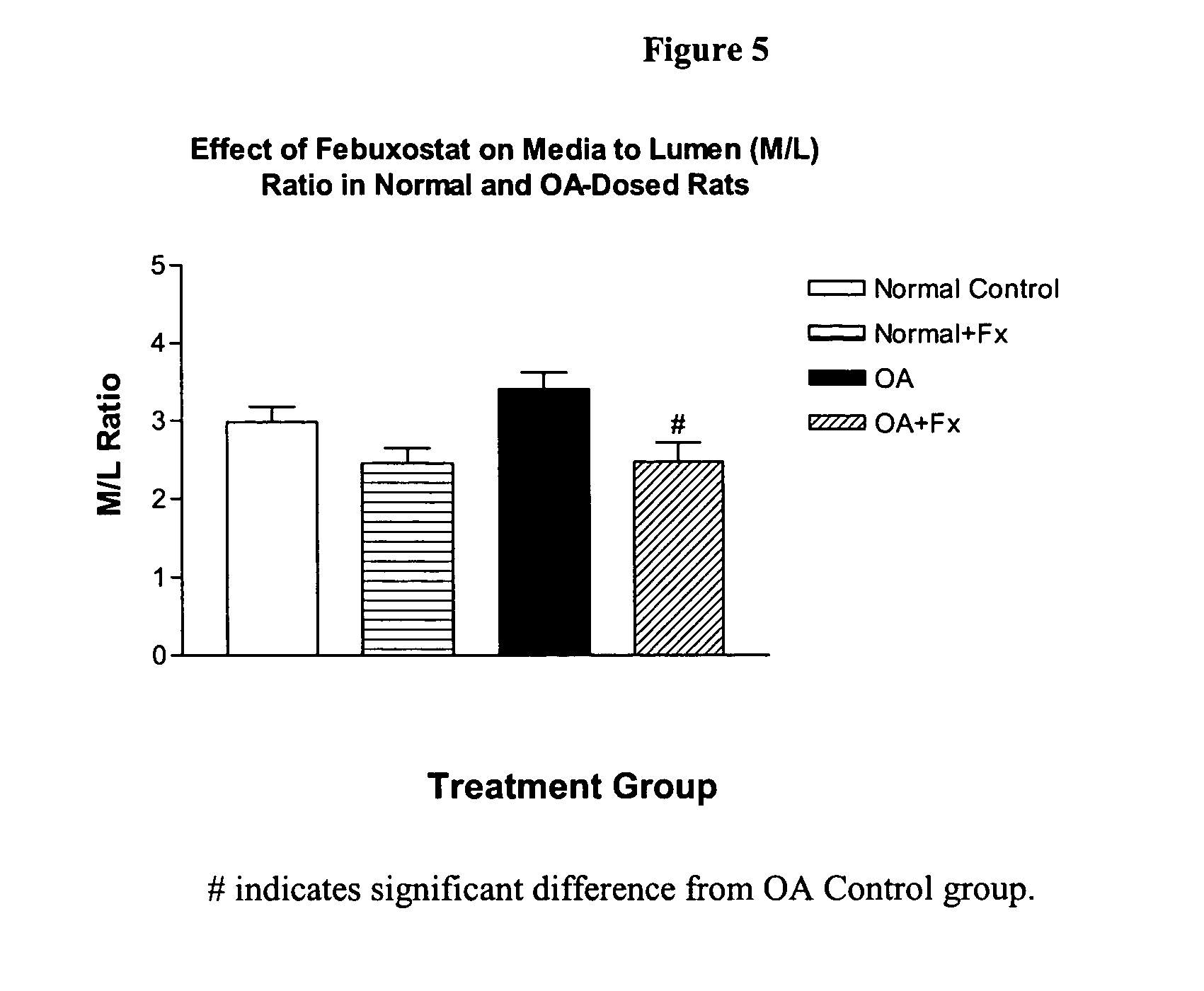Methods for treating hypertension
a hypertension and hypertension technology, applied in the field of hypertension treatment methods, can solve the problems of kidney failure, reduced blood supply to the kidney, and stomach rupture,
- Summary
- Abstract
- Description
- Claims
- Application Information
AI Technical Summary
Benefits of technology
Problems solved by technology
Method used
Image
Examples
example 1
[0197] A total of 103 subjects (9 in the placebo group, 26 in each the 2-[3-cyano-4-(2-methylpropoxy)phenyl]-4-methylthiazole-5-carboxylic acid (hereinafter referred to as “febuxostat”) 80 mg and 120 mg once daily (hereinafter referred to as “QD”) groups, 10 in the febuxostat 240 mg QD group and 32 in the 4-hydroxy-3,4-pyrazolopyrimidine (hereinafter referred to as “allopurinol”) 300 / 100 mg QD group), having a systolic BP≧160 mmHg or diastolic BP≧95 mmHg, and thus considered to have “elevated blood pressure”, were examined. Allopurinol is not a xanthine oxidoreductase inhibitor. Unlike xanthine oxidoreductase inhibitors, allopurinol contains a purine ring and also has an effect at a therapeutically effective amount in a subject on the activity of several enzymes involved in purine and pyrimidine metabolism, such as purine nucleotide phosphorylase or orotidine-5-monophosphate decarboxylase.
[0198] None of the above subjects were taking any antihypertensive agents at the baseline (sta...
example 2
[0203] A total of 158 subjects (11 in the placebo group, 46 in the febuxostat 80 mg QD group, 39 in the febuxostat 120 mg QD group, 15 in the febuxostat 240 mg QD group and 47 in the allopurinol 300 / 100 mg QD group), having a systolic BP≧160 mmHg or diastolic BP≧95 mmHg, and thus considered to have “elevated blood pressure”, were examined. None of these subjects were taking any angiotensin-coverting enzyme inhibitors, but might have been taking some other type of antihypertensive drug at the baseline (start) of the study. These 158 subjects were part of two (2) DB studies. One study was of 28 weeks in duration during which subjects received 80 mg, 120 mg or 240 mg QD of febuxostat or placebo or allopurinol 300 or 100 mg QD, depending on the subject's renal function. The second study was 52 weeks in duration during which subjects received 80 mg or 120 mg QD of febuxostat or allopurinol 300 mg QD.
[0204] Of these 158 subjects, all completed 4 weeks of treatment and 114 completed 28 we...
example 3
[0208] A total of 187 subjects (13 in the placebo group, 52 in the febuxostat 80 mg QD group, 48 in the febuxostat 120 mg QD group, 15 in the febuxostat 240 mg QD group and 59 in the allopurinol 300 / 100 mg QD group), having a systolic BP≧160 mmHg or diastolic BP≧95 mmHg, and thus considered to have “elevated blood pressure”, were examined. None of these subjects were taking any angiotensin antagonists, but might have been taking some other type of antihypertensive drug at the baseline (start) of the study. These 187 subjects were part of two (2) DB studies. One study was of 28 weeks in duration during which subjects received 80 mg, 120 mg or 240 mg QD of febuxostat or placebo or allopurinol 300 or 100 mg QD, depending on the subject's renal function. The second study was of 52 weeks in duration during which subjects received 80 mg or 120 mg QD of febuxostat or allopurinol 300 mg QD.
[0209] Of these 187 subjects, all completed 4 weeks of treatment and 132 completed 28 weeks of treatm...
PUM
| Property | Measurement | Unit |
|---|---|---|
| Pressure | aaaaa | aaaaa |
| Pressure | aaaaa | aaaaa |
| Pressure | aaaaa | aaaaa |
Abstract
Description
Claims
Application Information
 Login to View More
Login to View More - R&D
- Intellectual Property
- Life Sciences
- Materials
- Tech Scout
- Unparalleled Data Quality
- Higher Quality Content
- 60% Fewer Hallucinations
Browse by: Latest US Patents, China's latest patents, Technical Efficacy Thesaurus, Application Domain, Technology Topic, Popular Technical Reports.
© 2025 PatSnap. All rights reserved.Legal|Privacy policy|Modern Slavery Act Transparency Statement|Sitemap|About US| Contact US: help@patsnap.com



